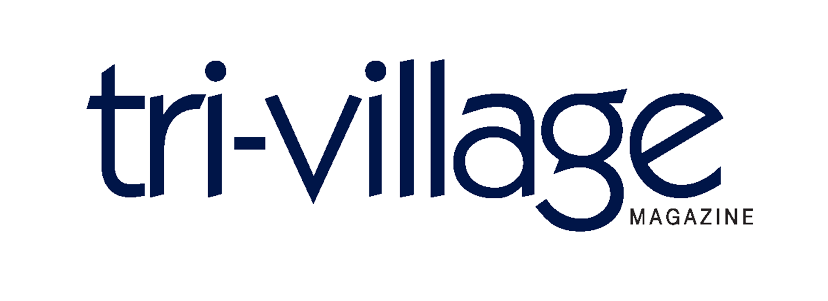What do kids want to do after school? Usually not sit through more structured activities. Letting kids have a little freedom is exactly the idea at P.A.R.K., a before- and after-school program run by Grove City Parks and Recreation.
“This is their going home place without going home,” says Megan Williams, a recreation supervisor for Parks and Recreation. “We need to remember that and keep that in mind, that they still want some time to do their own thing.”
P.A.R.K., which stands for ProgrammedAfter-school Recreation for Kids, aims to create a fun, safe environment outside of school hours. While offering some organized activities, P.A.R.K. focuses on giving kids choice and, of course, giving them a chance to play outdoors.
“We’re obviously a recreational-based program,” says Amanda Gehres, another recreation supervisor for parks and recreation. “We want kids active and moving, that’s definitely a priority of ours. We want kids to have fun.”
The program offers kids a wide range of activity options from group games and arts and crafts projects to socializing or starting on schoolwork. While there is structure to the program, students are largely given a choice of the activities they’d like to participate in.
“Our staff model what kind of choices those might be, but we want kids to choose,” Gehres says. “It’s definitely important to provide that creativity.”
The P.A.R.K. program dates back to the ’80s. Looking to create an option for families with parents whose work schedules didn’t align neatly with school hours, Grove City Parks and Recreation offered after-school care for elementary students in the South-Western CitySchool District, which then included kindergarten through fifth grade.
The program began at J.C. SommerElementary and has since expanded to include Buckeye Woods, HighlandPark, Monterey and Richard Avenue elementary schools for after-school care.
Before-school P.A.R.K. takes place at Kingston Center, home to Parks and recreation, after which students walk or are bused to their schools.
Now, P.A.R.K. offers before- and-after-school care for kindergarten through fourth grade students and before-schoolcare for fifth and sixth grade. A full-day summer program is also offered from 7 a.m.-6 p.m. on weekdays. The beforeschoolprogram starts at 6 a.m. and afterschoolgoes until 6 p.m.
“Our program has kind of evolved as the school district has evolved,” Gehressays. “That’s why our grades have changed over the years.”Since P.A.R.K.’s beginning, SWCSDhas moved fifth-grade students from elementary to intermediate schools, which shifted the program's age range as well. When the organizers conducted a survey of fourth-grade participants around seven years ago, Gehres says the students had a clear interest in continuing with P.A.R.K. after elementary school, leading to the before-school program expanding to include intermediate grades.
In fact, kids often can’t get enough of the program, sometimes asking parents who've arrived for pickup to come back later. Gehres says the kids love the chance to spend more time with friends and get out some energy. With the expanded range, many students participate in P.A.R.K. for multiple years.
“It’s really special when we do have a family that’s in our program all the way from kindergarten through (sixth grade),” Gehres says.
Some students have even returned as P.A.R.K. leaders. Kira Deerman, a freshman at The Ohio State University who recalls participating in before, after and summer P.A.R.K. programs from kindergarten through sixth grade, is now a staff member.
“It was really influential on me as a kid,” she says. “I think it’s a really good way to get your kid involved and meeting different types of kids in the community.”
Part of P.A.R.K.’s appeal is giving kids a chance for social time they wouldn't normally get at home. Roughly200 kids are enrolled in the program for this school year, a lower number due to the pandemic. Having a group allows for games that couldn’t be easily organized at home and general socializing.
Besides the social benefit, P.A.R.K.also includes activities that relate back to educational standards while keeping things more free-form than typical school activities. An arts and crafts project could apply to science, for example – making slime is a favorite in recent years.
One thing not allowed at P.A.R.K.:screens. The program doesn’t permit electronic devices, instead emphasizing outdoor play and personal interaction. Some kids will still talk about social media or create art projects inspired by video games. Gehres says that creates an added bonding opportunity while giving students a break from their devices.
Not having access to screens is rarely a problem, though. Students usually find plenty of enjoyment in the more physical games anyway. A coincidental side effect: Kids let out a lot of their energy at P.A.R.K.
“In our full-day summer care,” Williams says, “we typically hear on a daily basis a parent will say, ‘Oh, my child went to bed so early last night.’”
The staff works hard to ensure that, whether kids enjoy all the action or prefer calmer activities and smaller groups, everyone’s needs are being met. When students show up a little wary about the program, they tend to come around.
“You can see a kid crying the first two or three days,” Williams says, “and then all of the sudden they’re friends with everyone and they’re ready to do everything that everyone else is doing.”

Courtesy of Grove City Parks and Recreation Department
Cameron Carr is an editor at CitySceneMedia Group. Feedback welcome at ccarr@cityscenemediagroup.com.






